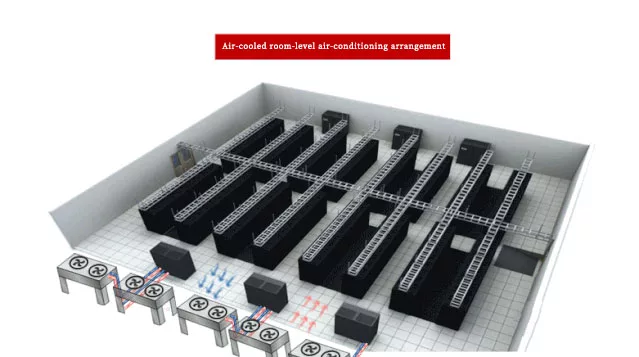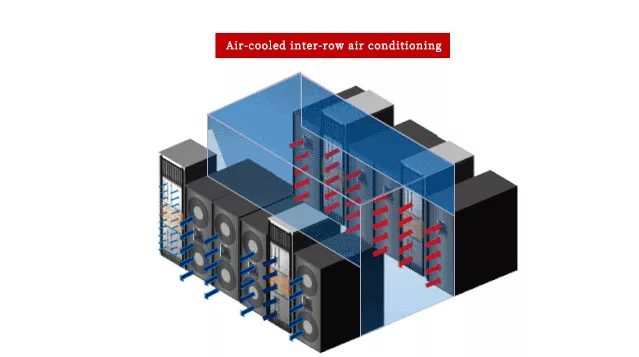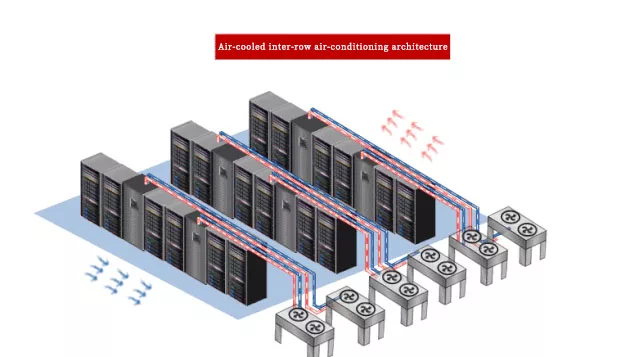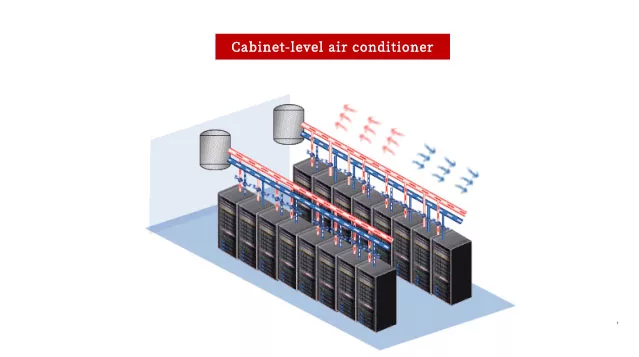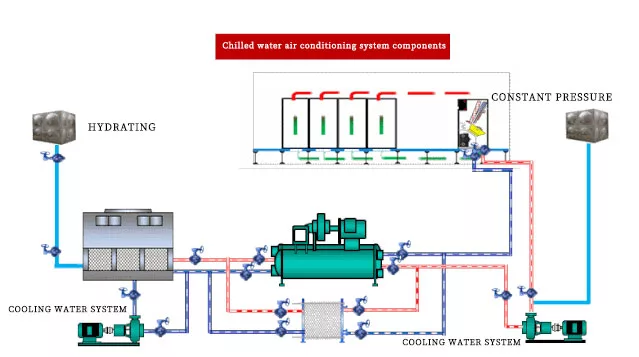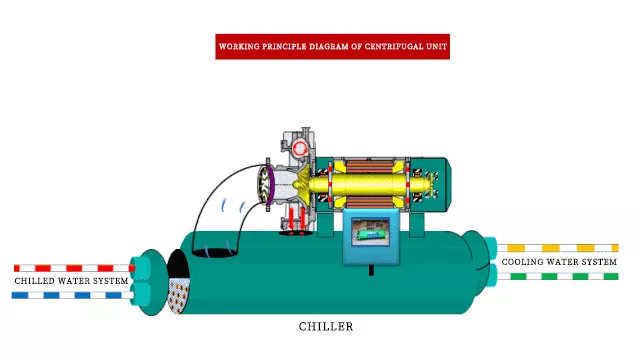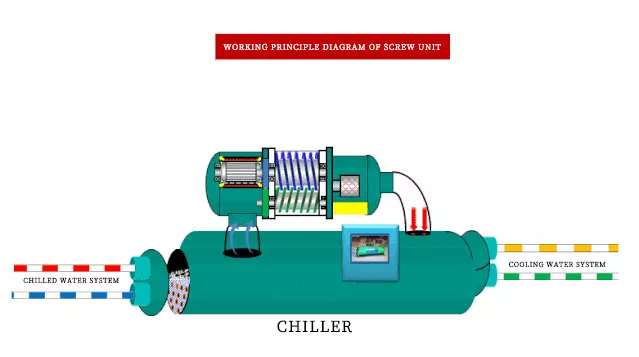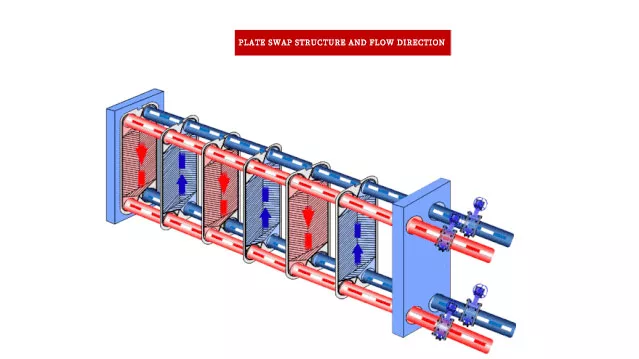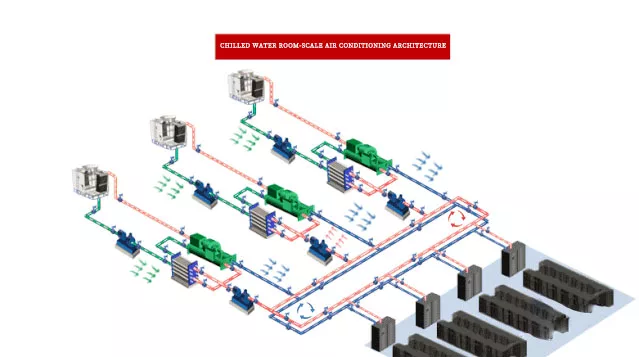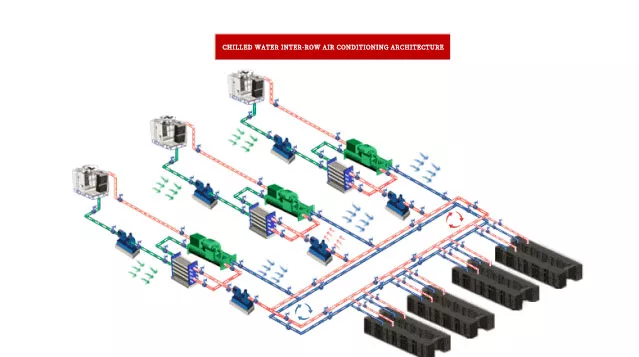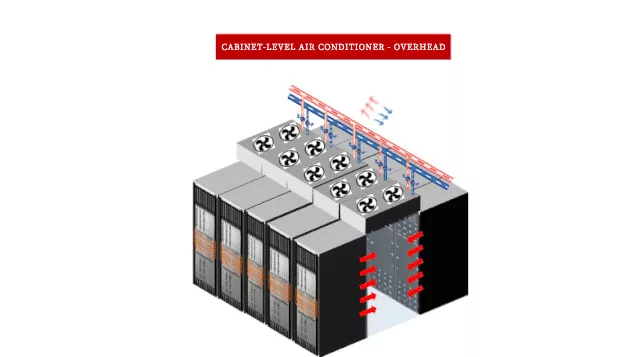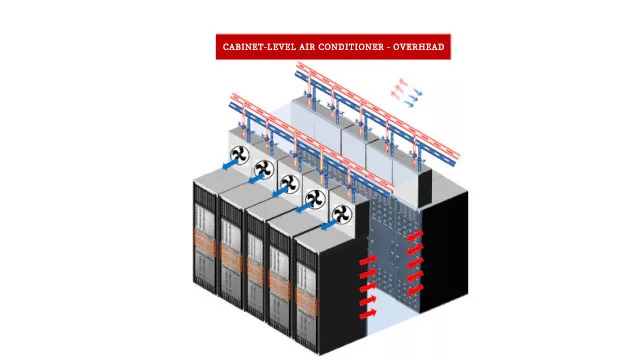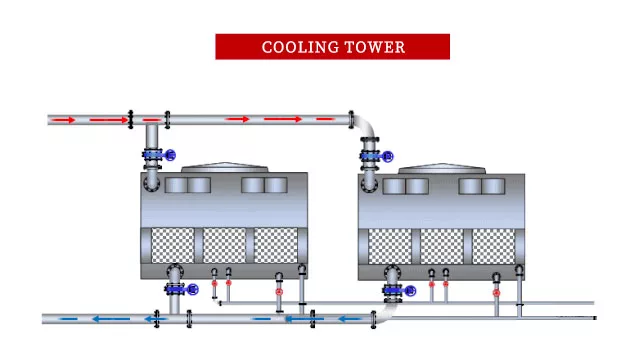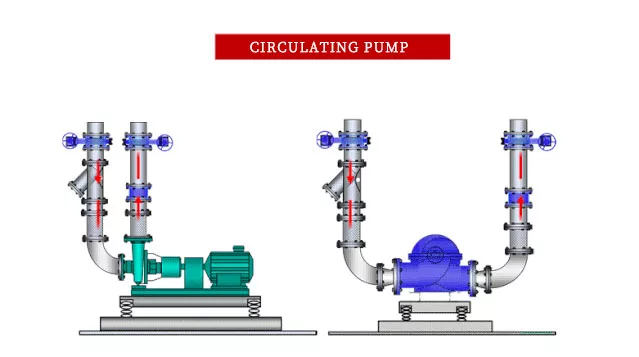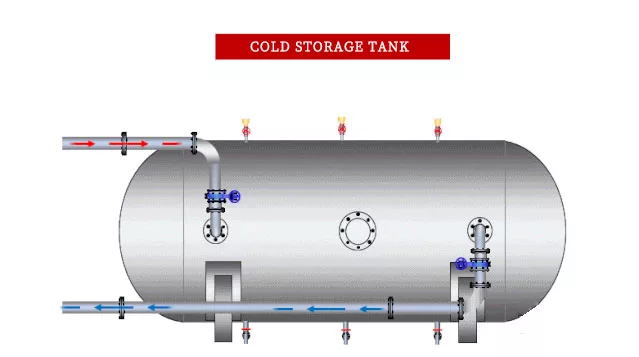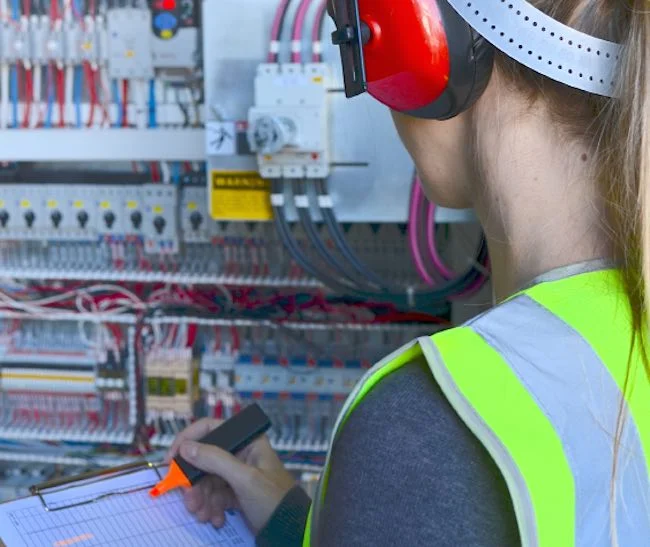There are various cooling methods for data centers. Here is a list and brief introduction of these methods:
01 Air-cooled Room Air Conditioning
This is the most traditional cooling method. The air conditioner consists of an indoor unit and an outdoor unit connected by refrigerant pipes. The indoor unit comprises a compressor, expansion valve, evaporator, and other components, enabling cooling and airflow transmission functions. The outdoor unit is used for heat dissipation, as shown in Figure 1. Conventional air-cooled room air conditioners use fixed-speed scroll compressors for cooling, while a small number may use digital scroll or variable frequency scroll compressors. The outdoor unit is installed outdoors or on the roof, with limitations on the distance between the indoor and outdoor units: the distance should not exceed 20 meters for indoor units and should not be less than 5 meters. The recommended length of indoor and outdoor piping is less than 60 meters, requiring additional components and measures when exceeded.
Figure 1 Typical Structure of Air-cooled Room Air Conditioning
1.2 Air Supply Methods: The conventional methods include top air supply (Figure 2), air duct air supply (Figure 3), and underfloor air supply (Figure 4).
 Figure 2
Figure 2


1.3 Typical Layout: To optimize airflow and further enhance cooling, downward supply with containment is a ventilation and cold aisle optimization method, as shown in Figure 5.

1.4 Suitable Scenarios: Air-cooled air conditioners are independent of each other and have no single point of failure, making them particularly suitable for small and medium-sized data centers. When the distance of airflow transmission is short, a single-sided layout can be used. When the transmission distance is long, a double-sided layout is recommended, as shown in Figure 6.
Figure 6 Layout of Air-cooled Air Conditioning in Data Centers
1.5 Indoor Unit Types: In addition to room-level air conditioning, there are also inter-row air conditioning and cabinet-level air conditioning. These methods can reduce the distance of airflow distribution and reduce fan power consumption. Inter-row air conditioning, when combined with closed hot and cold aisles, can achieve better cooling effects, as shown in Figure 7. If not enclosed, it is as shown in Figure 8.
Figure 7 Inter-row Air Conditioning with Closed Hot Aisles
Figure 8 Inter-row Air Conditioning
To further reduce the distance of airflow distribution, some data centers also adopt cabinet-level cooling methods, such as heat pipe backplanes, as shown in Figure 9.
Figure 9 Cabinet-level Air Conditioning
1.6 Pros and Cons of Air-cooled Room Air Conditioning
Advantages: Simple and completely independent system, low investment, convenient phased construction, no single point of failure, and high reliability.
Disadvantages: Multiple outdoor units, lower efficiency of scroll compressors compared to centrifugal compressors, air-cooled heat dissipation not suitable for large-scale deployment, prone to high pressure in summer, overall energy efficiency not high.
Suitable for: Medium-sized data centers.
02 Centralized Water-cooled Chilled Water Air Conditioning
The water-cooled chilled water system consists of two water systems: the cooling water system and the chilled water system. The system mainly consists of water-cooled chiller units, chilled water pumps, cooling towers, cooling water pumps, water treatment equipment, constant-pressure replenishment systems, chilled water air conditioning end units, and pipeline valves, as shown in Figure 10.
Figure 10 Water-cooled Chilled Water Air Conditioning
2.1 Compressor: Water-cooled chilled water systems generally use large-scale chiller units. Centrifugal units are chosen for larger cooling capacity to achieve a better energy efficiency ratio, as shown in Figure 11. Some medium-sized data centers may also use screw units, as shown in Figure 12.
Figure 11 Working Principle of Centrifugal Compressor
Figure 12 Working Principle of Screw Compressor
2.2 Plate Heat Exchanger: To further improve energy efficiency and reduce energy consumption, plate heat exchanger systems may be used, as shown in Figure 13. When the ambient temperature is low, natural heat exchange through plate heat exchangers can be employed.
Figure 13 Working Principle of Plate Heat Exchanger
2.3 End Unit Types: The chilled water air conditioning end units are divided into room-level (Figure 14), inter-row level (Figure 15), and cabinet-level air conditioning.
Figure 14 Chilled Water Room-level Architecture
Figure 15 Chilled Water Inter-row Architecture
Some data centers may also adopt overhead air conditioning with closed hot aisles to further shorten the distance of airflow circulation. The installation methods of overhead air conditioning can be horizontal (Figure 16) or vertical (Figure 17).
Figure 16 Overhead Air Conditioning (Horizontal)
Figure 17 Overhead Cabinet-level Air Conditioning (Vertical)
2.4 Cooling Tower: Cooling towers can be open or closed, with crossflow and counterflow configurations. Steel towers are commonly used for data center cooling towers, and Figure 18 shows an example of a crossflow open steel tower.
Figure 18 Cooling Tower
2.5 Circulating Water Pump: The water pump is a device that converts mechanical energy into liquid energy, circulating water within the water system. The circulation of chilled water and cooling water is achieved through water pumps. Common circulating water pumps include end suction pumps and double suction pumps, as shown in Figure 19.
Figure 19 Circulating Water Pump
2.6 Chilled Water Storage Tank: Considering the time required for the chiller unit to start and operate normally after a power outage, a certain amount of chilled water storage is necessary. This can be achieved by establishing a chilled water storage tank or reservoir to ensure the safe operation of data center equipment. Chilled water storage tanks can be open or closed, with closed tanks further divided into vertical and horizontal configurations, as shown in Figure 20.
Figure 20 Horizontal Chilled Water Storage Tank
2.7 System Characteristics:
Advantages: Cooling towers for heat dissipation occupy a small area and have good cooling effects. Centrifugal compressors have high energy efficiency. Plate heat exchangers can provide free cooling in winter.
Disadvantages: Complex system composition, high investment, involving both cooling and chilled water systems, complex construction, implementation, and operational maintenance. The reliability of water systems is lower, and there is a possibility of water leakage in the data center. Single points of failure exist, requiring equipment redundancy, loop networks, or dual systems to address reliability issues.
Common Layout: High-efficiency chillers with plate heat exchangers for natural cooling are widely used in large-scale data centers.
Note: The translation is provided to the best of my abilities, but it’s always recommended to have a professional translator review and refine the content for accuracy and clarity.


